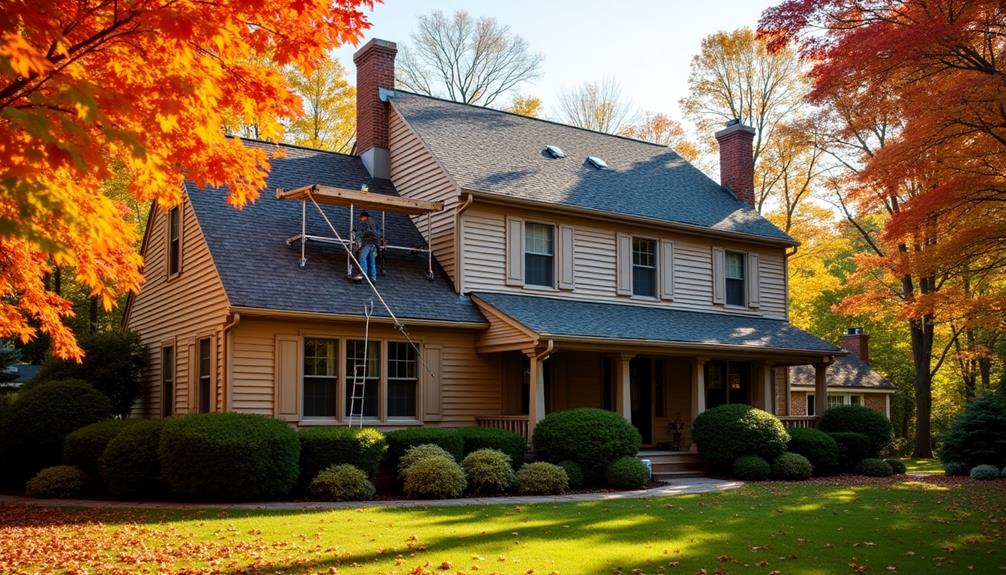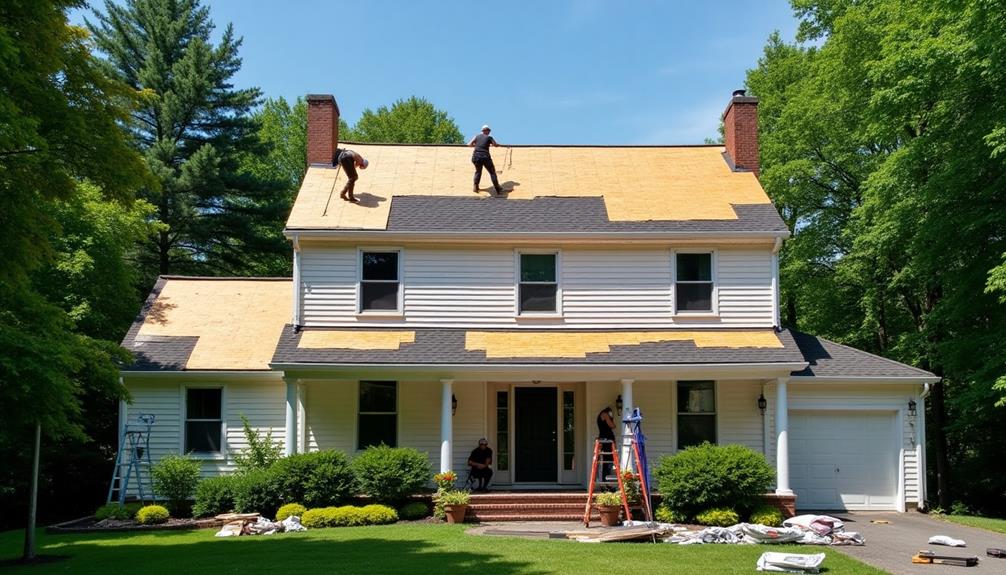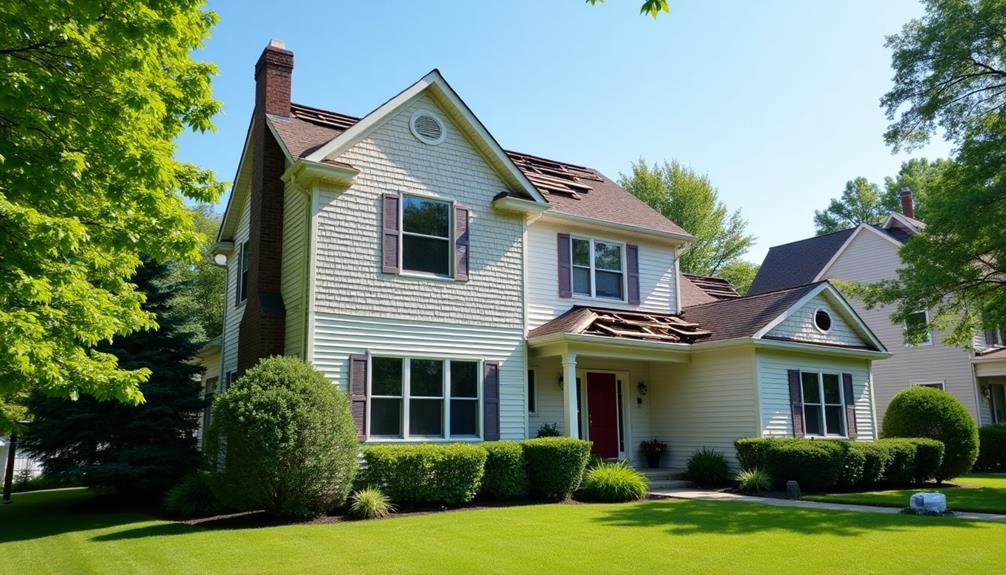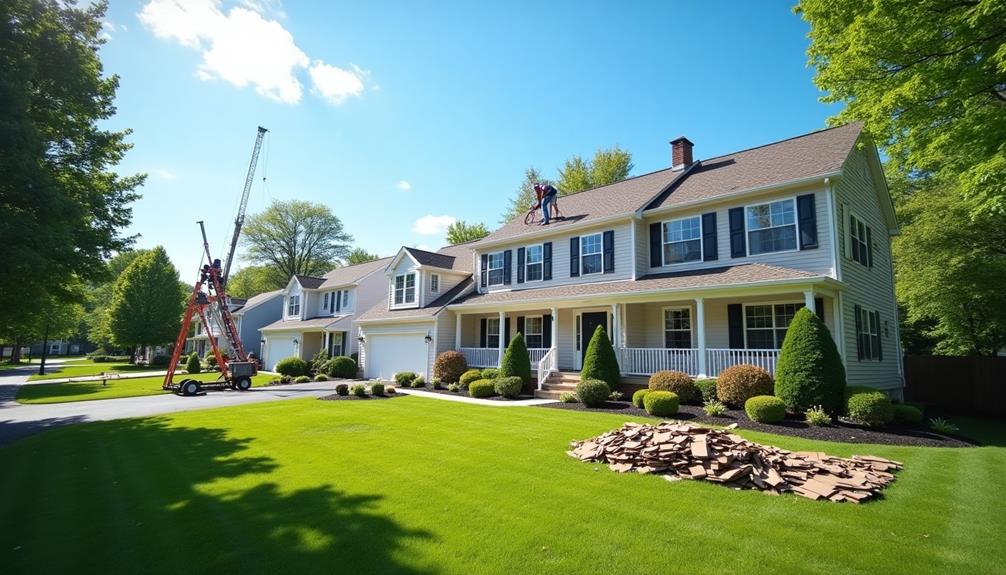Did you know that proper insulation can reduce your energy bills by up to 30%? To achieve this, you'll need to first assess your home's unique needs and understand the different types of insulation available. From attics to walls, every area has its specific requirements. Choosing the right materials and techniques can make a significant difference in your home's comfort and efficiency. So, where do you start, and what steps should you take to ensure your efforts are effective?
Understanding Insulation Types
When it comes to comfort and energy efficiency, understanding insulation types is crucial for any homeowner. Different insulation materials, like fiberglass, foam, and cellulose, offer unique benefits.
For instance, fiberglass is known for its affordability and effectiveness, while foam provides superior air sealing and moisture resistance. Knowing these distinctions helps you make informed decisions.
Many insulation myths can cloud your judgment. You might think that more insulation always means better performance, but that's not necessarily true. Over-insulating can lead to moisture problems, which can cause mold and structural damage.
Additionally, some believe that insulation only matters in winter, but it plays a key role in keeping your home cool during summer months, too.
Assessing Your Home's Needs
To effectively insulate your home, you need to start by identifying areas where heat is escaping.
Take a close look at your existing insulation levels to see if they meet your needs.
This assessment will guide you in making informed decisions about improvements.
Identify Heat Loss Areas
Identifying heat loss areas in your home is crucial for effective insulation, as it allows you to target improvements where they're needed most.
Begin by walking through your home and checking for signs of air leaks. Common culprits include windows, doors, and electrical outlets. You can use a simple method: hold a lit candle near these areas; if the flame flickers, you've likely found a leak.
Next, draft an insulation plan based on your findings. Focus on areas with the most significant heat loss, such as attics, basements, and exterior walls.
Consider using thermal imaging tools or even a home energy audit to pinpoint where heat escapes.
Don't forget to inspect less obvious locations, like ductwork and ventilation systems, which can also contribute to heat loss if not properly sealed.
By systematically detecting air leaks and identifying heat loss areas, you can prioritize your insulation efforts effectively, making your home more energy-efficient and comfortable.
This proactive approach not only saves energy but also reduces your utility bills, making it a worthwhile investment in your home's longevity.
Evaluate Existing Insulation Levels
Evaluating your existing insulation levels is a critical step in enhancing your home's energy efficiency. Start by checking areas like attics, basements, and walls, where insulation materials may be lacking or deteriorating.
Use a measuring tape to assess the thickness of your insulation; generally, you want at least 12 inches in the attic for optimal performance.
Next, consider the type of insulation materials used. Common options include fiberglass batts, spray foam, and cellulose. Each has its own insulation techniques for installation and effectiveness.
For instance, spray foam can expand to fill gaps, providing excellent air sealing and thermal resistance, while fiberglass batts are often easier to install in existing structures.
Compare your findings to the recommended insulation levels for your climate zone. If your insulation falls short, it's time to plan for upgrades or additional layers.
Remember, a well-insulated home not only cuts down on energy costs but also ensures a comfortable living environment year-round.
Choosing the Right Materials
When it comes to insulating your home, choosing the right materials is essential for achieving optimal energy efficiency.
You'll want to understand the different types of insulation available, the importance of R-value, and consider eco-friendly options that suit your needs.
Insulation Types Overview
As you embark on your home insulation project, understanding the various insulation types is crucial for making the right choice. Each type serves different purposes and has unique benefits.
Spray foam insulation expands upon application, providing an excellent air seal and high R-value, though it can be one of the higher insulation costs.
Fiberglass batts are popular for their affordability and ease of installation. They fit well between wall studs but may require vapor barriers in humid areas.
Cellulose insulation, made from recycled paper, is eco-friendly and effective at reducing air leaks but may need soundproofing insulation properties for noise reduction.
Rigid boards are great for insulating basement walls and crawl spaces, while reflective barriers help reduce heat gain in attics.
Mineral wool is another option, offering both thermal and soundproofing capabilities.
Consider your specific needs when choosing.
R-Value Importance
Understanding R-value is essential when choosing insulation materials for your home. R-value measures a material's resistance to heat flow, helping you determine how effective different insulation options are. When you compare R values, you can easily identify which materials will provide the best thermal performance for your specific needs.
Higher R values indicate better insulation properties, meaning you'll maintain a comfortable temperature indoors while reducing energy costs. This translates to significant R value benefits, such as improved energy efficiency and reduced heating and cooling expenses.
For instance, fiberglass insulation typically has an R-value ranging from 2.9 to 4.3 per inch, while spray foam can reach R-values as high as 6.5 to 7 per inch.
When evaluating insulation materials, consider your local climate, as well as the area of your home that needs insulation. Remember, the right choice can dramatically impact your energy bills and overall comfort.
Always refer to R value comparisons to make informed decisions and ensure you're investing in materials that will provide the best long-term results for your home's insulation needs.
Eco-Friendly Options
Choosing insulation materials that are eco-friendly not only benefits the environment but can also enhance your home's energy efficiency. When selecting materials, consider using recycled materials, which help reduce waste and conserve resources. Options like cellulose, made from recycled paper, are excellent for insulation while being kind to the planet.
Natural fibers, such as wool, cotton, or hemp, are another sustainable choice. They provide effective insulation and have lower environmental impacts than synthetic materials. Plus, they can regulate moisture, contributing to a healthier indoor environment.
If you're interested in DIY insulation, there are several eco-friendly methods you can implement. For instance, you can create your own insulation using recycled denim or other natural fibers, making it a fun and rewarding project.
Implementing sustainable practices in your insulation process not only makes your home more energy-efficient but also supports a greener lifestyle. By choosing eco-friendly materials, you're making a positive contribution to the environment while ensuring your home remains comfortable year-round.
Insulating the Attic
Your attic's insulation plays a crucial role in maintaining your home's energy efficiency and comfort. Proper insulation helps regulate temperature and prevents heat loss during winter and heat gain in summer.
Start by assessing your current insulation. If it's old or insufficient, you'll want to replace or add more.
Before diving into insulation installation, ensure you have adequate attic ventilation. Proper airflow prevents moisture buildup, which can damage your insulation and lead to mold growth. Check for vents and ensure they're unobstructed. This is key to maintaining a healthy attic environment.
When it comes to choosing insulation material, you can opt for fiberglass batts, spray foam, or cellulose based on your budget and needs. Measure your attic space accurately to determine how much insulation you'll need.
During installation, wear protective gear and follow manufacturer guidelines for best results. After laying down the insulation, make sure it's evenly distributed and doesn't block any vents.
Regularly inspecting your attic insulation will help maintain its effectiveness over time. Taking these steps will ensure your attic remains energy-efficient, contributing to overall comfort in your home.
Insulating Walls and Floors
When it comes to keeping your home cozy and energy-efficient, insulating walls and floors shouldn't be overlooked. Proper wall insulation helps maintain a stable indoor temperature by reducing heat loss in winter and keeping it cool in summer.
Start by assessing your walls. If you have exterior walls, consider using fiberglass batts or foam board insulation. For existing walls, blown-in insulation can be an efficient option.
Next, focus on floor insulation, particularly if you have unconditioned spaces like basements or crawl spaces. Insulating your floors will prevent cold drafts and heat loss through the ground. You can use rigid foam boards or fiberglass batts, placing them between floor joists.
If your home has a slab foundation, consider adding insulation beneath the concrete to improve energy efficiency.
Don't forget to check for any moisture issues before you start, as damp areas can lead to mold growth and damage.
Sealing Air Leaks
After ensuring your walls and floors are insulated, it's important to address air leaks that can undermine your efforts. Start by identifying where drafts are coming from. Common culprits include windows, doors, and gaps around pipes or vents. Feel for airflow using your hand or a lit candle; you'll find leaks that need attention.
Next, gather your drafting materials. You'll need weatherstripping for doors and windows, caulk for gaps, and foam sealant for larger holes.
Using these materials, employ effective sealing techniques. For example, apply weatherstripping to create a tight seal on movable parts of windows and doors. Use caulk for stationary areas, filling in cracks and gaps around frames and baseboards.
For larger openings, like those around pipes, foam sealant works wonders. Just remember to cut excess foam once it dries to maintain a neat appearance.
After sealing, double-check your work by repeating the airflow test. You'll notice a difference in comfort and energy efficiency. With these steps, you'll significantly reduce air leaks and enhance your home's insulation effectiveness.
Maintaining Your Insulation
Regularly maintaining your insulation can significantly prolong its effectiveness and keep your home comfortable. Start by creating seasonal checklists to ensure you check insulation in various areas of your home.
Each season, inspect your attic, basement, and crawl spaces for any signs of wear, moisture, or pest intrusion. Look for gaps or compressed areas in your insulation; if you find any, replace or add new insulation to maintain optimal performance.
It's also crucial to check for mold or mildew, as these can compromise insulation efficiency. If you spot any, take immediate action to clean and dry the affected area.
Another insulation maintenance tip is to ensure that your vents and fans are unobstructed. Blocked vents can lead to poor airflow, reducing insulation effectiveness.
Additionally, during seasonal changes, consider performing an energy audit to identify any insulation issues that need addressing.
Lastly, keep an eye on your utility bills. If you notice sudden spikes, it might be time to reassess your insulation.







